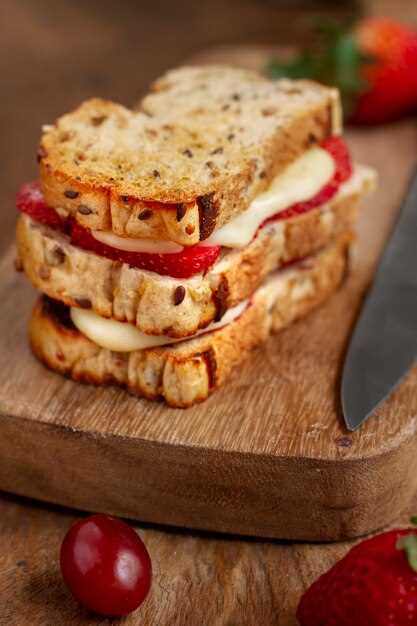Craving a foolproof weeknight meal? Try the Spicy Peanut Noodles – ready in under 20 minutes and endlessly adaptable to your veggie drawer. For a celebratory brunch, look no further than my grandmother’s Lemon Ricotta Pancakes, a fluffy cloud of citrus and sweetness guaranteed to impress. This assemblage isn’t just about sustenance; it’s a curated chronicle of flavors that have shaped my palate and nourished loved ones for years.
Within these pages, you’ll discover not only meticulous instructions and ingredient lists, but also the stories behind each creation. The Summer Gazpacho, for example, is a direct descendant of a late-summer harvest from my aunt’s garden in Tuscany. Or the Moroccan Tagine with Apricots and Almonds, inspired by a transformative trip to Marrakech, where I mastered the art of balancing sweet and savory notes.
Consider this more than a mere compilation of culinary instructions; it’s an invitation to explore the diverse influences that have shaped my approach to cooking. From simple, nourishing daily fare to elaborate feasts designed for special occasions, these are the palatable stories I carry with me, and I’m delighted to share them with you.
The Culinary Compendium: Secrets Revealed
For superior béchamel, infuse the milk with a halved onion, two cloves, and a bay leaf for 30 minutes before adding it to the roux. This imparts a subtle, layered flavor.
To prevent soggy pastry crusts in quiches and pies, blind bake at 375°F (190°C) for 15 minutes, then brush the base with beaten egg white before adding the filling. This creates a waterproof barrier.
Elevate your simple tomato sauce by roasting the tomatoes (Roma preferred) with garlic cloves and fresh thyme sprigs until slightly charred. Puree after roasting for intense sweetness and depth.
Achieve perfectly caramelized onions by cooking them low and slow–approximately 45 minutes over medium-low heat with a pinch of baking soda. The baking soda accelerates browning.
When making homemade pasta, add a tablespoon of olive oil to the dough for increased elasticity and a smoother texture. Rest the dough for at least 30 minutes before rolling.
Upgrade mashed potatoes with roasted garlic. Wrap a head of garlic in foil with olive oil and roast at 400°F (200°C) for 45 minutes, or until softened. Squeeze the softened cloves into the potatoes while mashing.
For fluffier scrambled eggs, whisk in a tablespoon of cream cheese per two eggs before cooking. Cook over low heat, stirring constantly, to prevent them from becoming dry.
Sourcing the Ingredients: Best Practices
Prioritize farmers’ markets for peak-season produce, ensuring freshness and supporting local growers. Ask vendors about growing practices; organic certification isn’t always a guarantee of quality.
For spices, buy whole spices and grind them yourself immediately before use; they retain aroma and flavor far better than pre-ground options. Purchase from reputable sources specializing in spices, such as Penzeys or The Spice House, guaranteeing authenticity.
When selecting seafood, check for firm flesh, a fresh sea smell (avoid ammonia-like odors), and clear, bright eyes. Buy from fishmongers that explicitly label the source and catch method. Consult Seafood Watch guides for sustainability ratings.
Meat quality depends on breed, feed, and processing. Choose dry-aged beef for intense flavor and tenderness. Seek out farms employing rotational grazing practices for environmentally responsible production.
Bulk Buying Strategies
Evaluate pantry staples like flour, sugar, and grains using bulk bins. Consider cost-per-ounce comparisons. Proper storage is paramount; transfer bulk purchases to airtight containers to prevent spoilage and pest infestation.
For oils, olive oil should be cold-pressed and stored in dark glass bottles to prevent oxidation. Test oils’ flavor before large purchases. Coconut oil’s quality relates directly to production process. Ensure it’s unrefined and expeller-pressed.
Reducing Food Waste
Plan meal preparation closely. Make ingredient lists and only purchase items in needed quantities. Store vegetables and fruits properly to lengthen shelf life (e.g., storing leafy greens in breathable bags with a paper towel).
Use vegetable scraps (onion skins, carrot peels, celery ends) to prepare stocks and broths, extending their usefulness and adding deep flavor to culinary creations. Compost food scraps that are otherwise unusable.
Prep Time Optimization: Speeding Up Cooking
Pre-chop vegetables upon returning from the grocery store. Store them in airtight containers; carrots and celery last up to two weeks, onions and peppers about five days.
Utilize multi-tasking: while pasta water boils, prepare the sauce. While meat marinates, chop accompanying vegetables.
Invest in a food processor with shredding and slicing attachments. Consider the power; a 600-watt model handles most tasks well.
Ingredient Organization
Employ the “mise en place” technique. Measure and arrange all ingredients before heating the pan. This reduces errors and wasted time.
Equipment Strategies
A sharp chef’s knife significantly reduces chopping time. Sharpen it weekly with a honing steel or monthly with a whetstone.
Employ a high-quality vegetable peeler. Ceramic peelers, for instance, maintain sharpness longer than stainless steel.
Batch cook grains like quinoa or rice on Sundays. Store in the refrigerator for quick additions to lunchtime salads or evening suppers.
Use a pressure cooker for lengthy braises; reduce cooking time by up to 70% for stews and tough cuts of meat.
Perfecting the Technique: Avoiding Common Mistakes
Don’t overcrowd the pan when searing meat. This lowers the pan’s temperature, resulting in steaming rather than browning. Sear in batches for optimal color and flavor.
When baking, always measure dry ingredients by weight, not volume. A cup of flour can vary significantly depending on how it’s packed, leading to inconsistent results. Use a kitchen scale for accuracy.
Common Baking Faux Pas
Under-mixing cake batter: Results in a dense cake with uneven texture. Mix until just combined, avoiding over-mixing to prevent a tough cake.
Opening the oven door too frequently: Causes temperature fluctuations that can lead to uneven baking or a sunken center, particularly in delicate items like soufflés.
Improving Broth Clarity
To achieve a clear broth, start with cold water and gently simmer, skimming any impurities that rise to the surface. Avoid a rolling boil, as this emulsifies fats and proteins, clouding the broth.
Always temper eggs before adding them to hot liquids. Gradually whisk a small amount of the hot liquid into the beaten eggs to raise their temperature before adding the egg mixture to the larger volume of liquid. This prevents curdling.
| Mistake | Solution |
|---|---|
| Using dull knives | Sharpen knives regularly for clean cuts and increased safety. |
| Ignoring ingredient temperatures | Ensure ingredients, particularly butter and eggs in baking, are at the correct temperature as specified in the procedure. |
When preparing vinaigrette, emulsify the oil and vinegar properly to prevent separation. Whisk vigorously or use a blender until the mixture is smooth and stable.
Serving Suggestions: Plating and Presentation
For stews, use warmed bowls to maintain temperature. Garnish with a swirl of crème fraîche and a sprinkle of fresh herbs like parsley or chives, finely chopped.
Grilled proteins benefit from resting before slicing. Fan the slices artfully across the plate, drizzling with pan jus or a complementary sauce. Consider a contrasting color for the plate itself.
Salads gain height and visual appeal when built vertically. Layer ingredients strategically, placing heavier elements at the base and lighter, delicate items on top. Edible flowers add a touch of elegance.
Desserts are enhanced by contrasting textures. Pair a smooth mousse with a crunchy crumble or a crisp tuile. Use a squeeze bottle to create intricate sauce designs.
Consider the “rule of thirds” when arranging elements on the plate. An asymmetrical arrangement is often more visually engaging than a symmetrical one. Leave white space for a modern look.
Use microgreens to add a pop of color and freshness. They are a simple yet effective garnish for almost any type of cuisine.
For pasta preparations, twirl the noodles using tongs and a spoon before placing them in the bowl to create height and prevent a flat presentation.
When serving soups, a drizzle of flavored oil (e.g., chili oil, truffle oil) can add both flavor and visual interest. Garnish with a dollop of yogurt or sour cream.
Roast vegetables look more appealing when arranged according to color and shape. Group similar hues together for a cohesive presentation.
Use specialized serving ware to elevate specific creations. A shallow bowl for carpaccio, a slate board for cheeses, or a martini glass for layered desserts can make a marked difference.
Recipe Variations: Tweaking Flavors to Your Taste
Reduce sweetness in baked goods by up to 25% without significantly affecting texture. Substitute applesauce for half the sugar in muffins or cakes.
Intensify umami in stews by adding a tablespoon of dried porcini mushroom powder. Rehydrate dried mushrooms in warm water, then finely grind them after drying to create the powder.
For a spicier kick, swap regular chili powder with ancho chili powder in your enchilada sauce. Ancho offers a richer, fruitier heat profile.
Achieve a brighter, more aromatic pesto by adding a handful of mint leaves to the basil. Start with a 1:3 ratio of mint to basil.
Elevate the richness of cream soups by incorporating a small amount of nutritional yeast. Its cheesy flavor enhances the savory elements.
Enhance the citrus aroma in marinades by using citrus zest instead of just juice. The zest contains concentrated oils and provides a more pungent flavor.
Modify the consistency of your gravies using different thickening agents. Cornstarch delivers a glossy finish, while arrowroot powder produces a clear, translucent sauce.
Add complexity to simple tomato sauces with a pinch of smoked paprika. This imparts a subtle smoky depth.
Adjust spice levels using different parts of a chili pepper. Remove the seeds and membranes for a milder flavor; keep them for intense heat. Caution: always handle chili peppers with gloves.
Balance acidity in tomato-based preparations with a dash of baking soda. It neutralizes excess acid, enhancing sweetness.
Q&A:
Many collection cookbooks contain dishes that are overly complex. Are the recipes in “My Recipes: A Collection of Favorite Dishes” manageable for someone who is relatively new to cooking, or are they geared more toward experienced chefs?
The recipes are designed to be accessible to a range of skill levels. Each one is presented with clear, step-by-step instructions and readily available ingredients. While some dishes might involve a slightly longer preparation time, the core techniques are explained simply, allowing beginners to build confidence. Experienced cooks can appreciate the familiar classics and adapt them to their own tastes. You’ll find a nice balance within the collection.
I often find myself modifying recipes to suit my dietary needs or preferences. Does the cookbook offer suggestions for substitutions, or are the recipes written to be followed rigidly?
While the recipes are delicious as written, substitutions are definitely possible. The introduction provides general guidance on making adjustments for dietary requirements like gluten-free, vegetarian, or dairy-free options. Specific dishes might suggest alternatives where appropriate, but feel free to use your creativity and knowledge of ingredients to tailor the recipes to your taste. The goal is to inspire you to cook, not restrict you!
Presentation is almost as significant as taste! Does the book include photos of the finished dishes to give readers visual inspiration?
Yes, the cookbook includes beautiful, full-color photographs of many of the finished dishes. These visuals are included not only to showcase the recipes but to give readers a concrete idea of how to plate and serve each dish. Photos can be incredibly helpful when you’re trying a new recipe and want to create a beautiful meal.
I’m always searching for new weeknight meal ideas that are both quick and flavorful. Does “My Recipes” include recipes that fit this description, or are they more geared toward weekend cooking?
The cookbook includes a selection of recipes specifically designed for busy weeknights. These dishes prioritize speed and ease of preparation without compromising on flavor. Look for recipes that require fewer ingredients and shorter cooking times. There is a section dedicated to simple, satisfying meals you can get on the table quickly.
Does the book contain an index? It’s very frustrating when a cookbook lacks one and you can’t find that particular recipe you were thinking about.
Yes, “My Recipes: A Collection of Favorite Dishes” includes a detailed index. It lists recipes by title and by ingredient, making it easy to locate exactly what you’re searching for. You’ll be able to quickly find dishes based on main ingredients, dietary considerations, or the specific name of the recipe.
I noticed you include a lot of spices in your recipes. What’s your advice for someone who’s a bit intimidated by using spices or doesn’t know where to begin experimenting with them?
That’s a great question! Spices can definitely seem daunting at first, but the key is to start small and focus on building your palate. Don’t feel pressured to buy every spice under the sun immediately. I recommend beginning with a few foundational spices like cumin, coriander, paprika (sweet or smoked), garlic powder, and onion powder. These are versatile and used in many cuisines. Try adding small amounts of one or two to dishes you already make. See how the flavor changes! Also, remember that spices have a “shelf life.” They gradually lose their potency, so try to buy them in small quantities and store them in a cool, dark, dry place. Finally, don’t be afraid to adjust quantities to suit your preference. If a recipe calls for a teaspoon of chili powder, but you’re sensitive to heat, start with half a teaspoon and add more as needed. Explore online resources that describe different spices and suggest pairings. There are many fantastic articles and videos out there to guide you.




